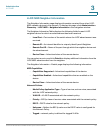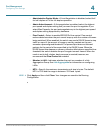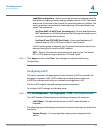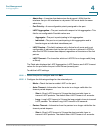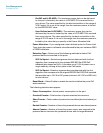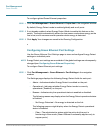
Port Management
Link Aggregation
Cisco Small Business SG200 Series 8-port Smart Switch 94
4
• Load Balance Algorithm—Select one of the options to enable the switch to
load-balance outgoing packets among member ports of a LAG. The switch
selects one of the links in the channel for transmitting specific packets. The
switch prioritizes each criteria for load balancing in the order listed in the
option. The options are:
- Src/Dest MAC, VLAN, EType, incoming port—Source and destination
MAC addresses, the VLAN membership, the Ethertype field, and the port
on which the packet was received.
- Src/Dest IP and TCP/UDP Port Fields—Source and destination IP
address and the TCP or UDP port number in the IP packet.
If the IP packet option is selected, non-IP packets received on the port are
balanced using the Src and Dest MAC address.
• MTU—Specify the maximum transmission unit size in bytes. The default
MTU is 1518 and the range is between 1518 and bytes.
STEP 4 Click Apply and then click Close. Your changes are saved to the Running
Configuration.
Configuring LACP
The switch uses the Link Aggregation Control Protocol (LACP) to automate the
formation of dynamic LAGs. LACP-enabled ports send protocol data units
(LACPDUs) to detect each other on a network and negotiate a LAG.
Use the LACP page to view and configure protocol operation.
To configure LACP settings on individual ports:
STEP 1 Click Port Management > Link Aggregation > LACP in the navigation window.
The LACP Interface Table displays the following information for each port:
• LACP Mode—The administrative status of LACP mode (Enabled or
Disabled)
The table displays the following information for the port when the port is the Actor
(local) port:
• System Priority—A nonconfigurable system priority assigned to the
switch.




